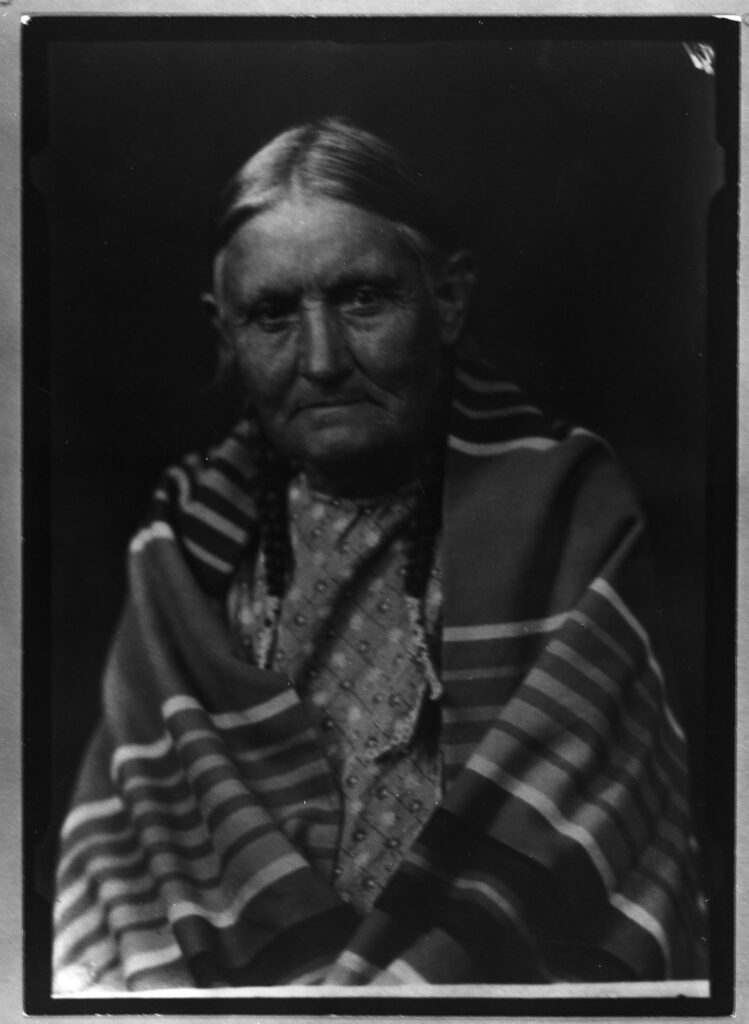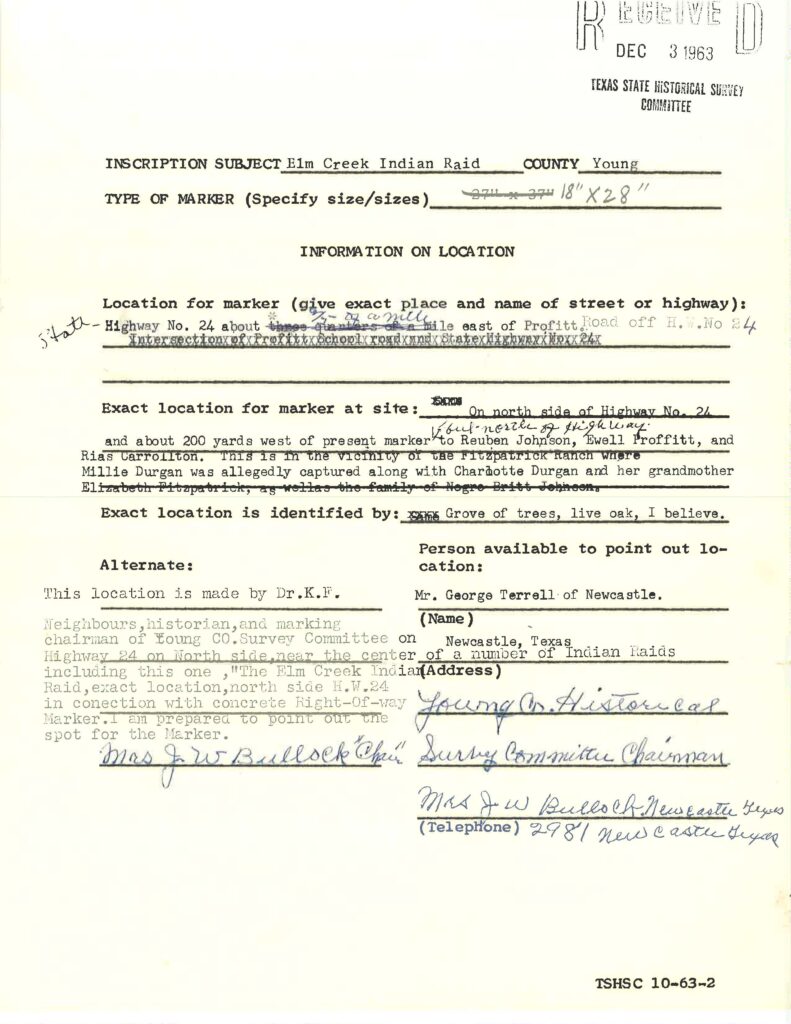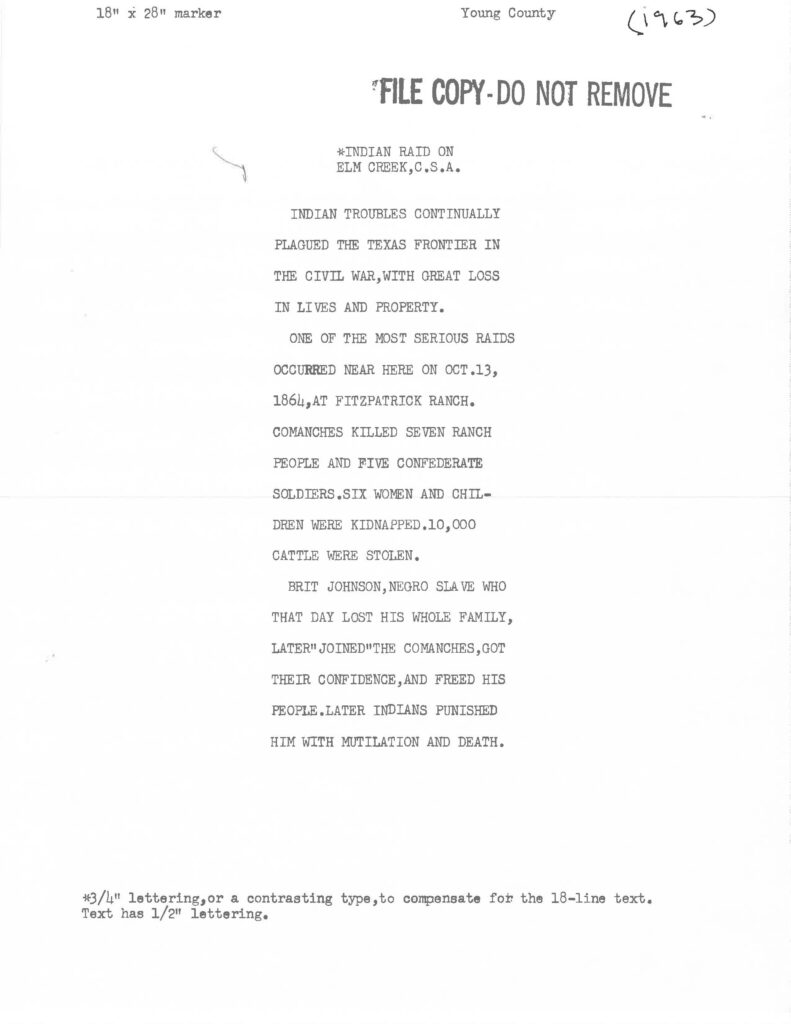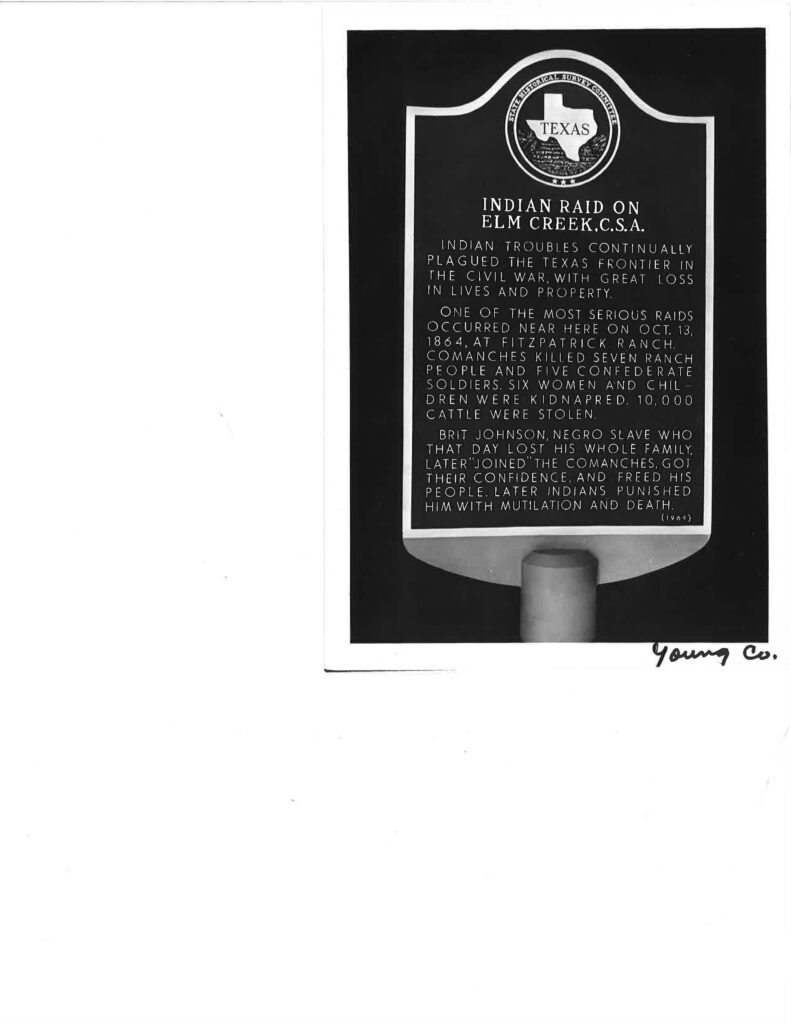Below is the 3-page application and instructions for text and placement of the Elm Creek Indian Raid historical marker on Highway 380 near Newcastle. This document was submitted by Mrs. J. W. Bullock of the Young County Historical, and stamped “Received” by the Texas State Historical Survey Committee1 on December 3rd, 1963.
⚠️ Before proceeding any further, consider this to be a public service announcement: If you are susceptible to going down rabbit holes (you know who you are), and you lack the sufficient time, energy, and/or self control that such a pursuit will demand, you should abort here, and return to the previous page by clicking here: 🛑because…
Millie and Charlotte Durgan

On the first page of the application below, you will find some additional detail not contained on the text of the actual marker. Specifically, you will see reference to the names of two children, Millie and Charlotte Durgan, who were kidnapped during the raid. And their story is certainly, in my view, one of the most compelling of this entire region and historical era.
You will also find, as is common with historical research of the era that when you begin to dig deeper, the stories conflict, often reflecting the perspectives of when and by whom they are told and re-told.
I am in no place to profer any singular truth, but I will say that the most widely circulated account is that Charlotte, aged 5 at the time of the incident, was recovered within a year from her Kiowa captors, by Brit Johnson (another incredible tale), with tribal tattoos on her face and arms, but otherwise unharmed. Her sister Millie, however, just 2 years old, was not returned, and here the plot thickens.
It is widely believed that Millie not only survived, but was taken in and raised by the Kiowa Indians, and given the name “Sain-toh-oodie” (meaning: killed with blunt arrow). She would live out the next 70 years with the Kiowa, marrying twice, and bearing nine children. Her true identity was discovered in 1931, a few years before her death in 1934 in Mountain View Oklahoma, as noted by this historical marker of the Oklahoma Historical Society.
Additional information on this fascinating life story can be found here , here, here, and here–I warned you.



- The committee operated from from 1953 to 1973, when the name was changed to the Texas Historical Commission, which is responsible for the more than 18,000 markers across all 254 Texas counties. History buffs can download their app, with maps and audio from the markers, trip planning, and more. ↩︎